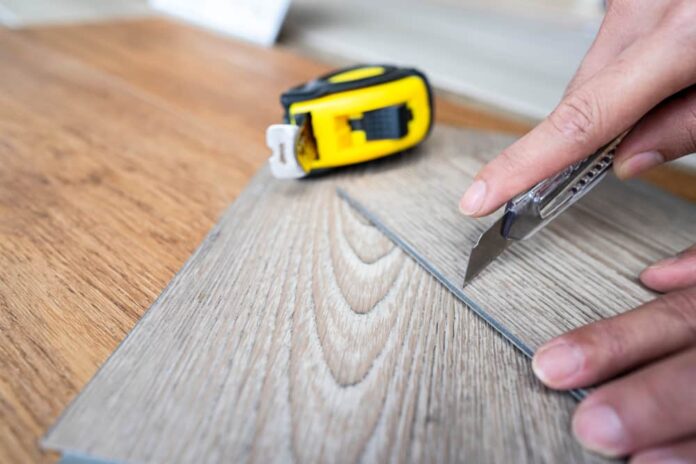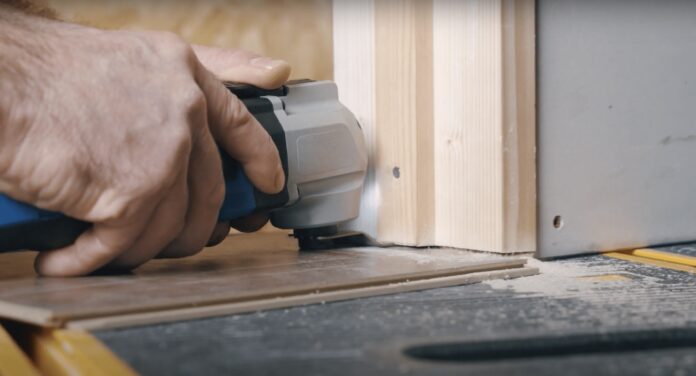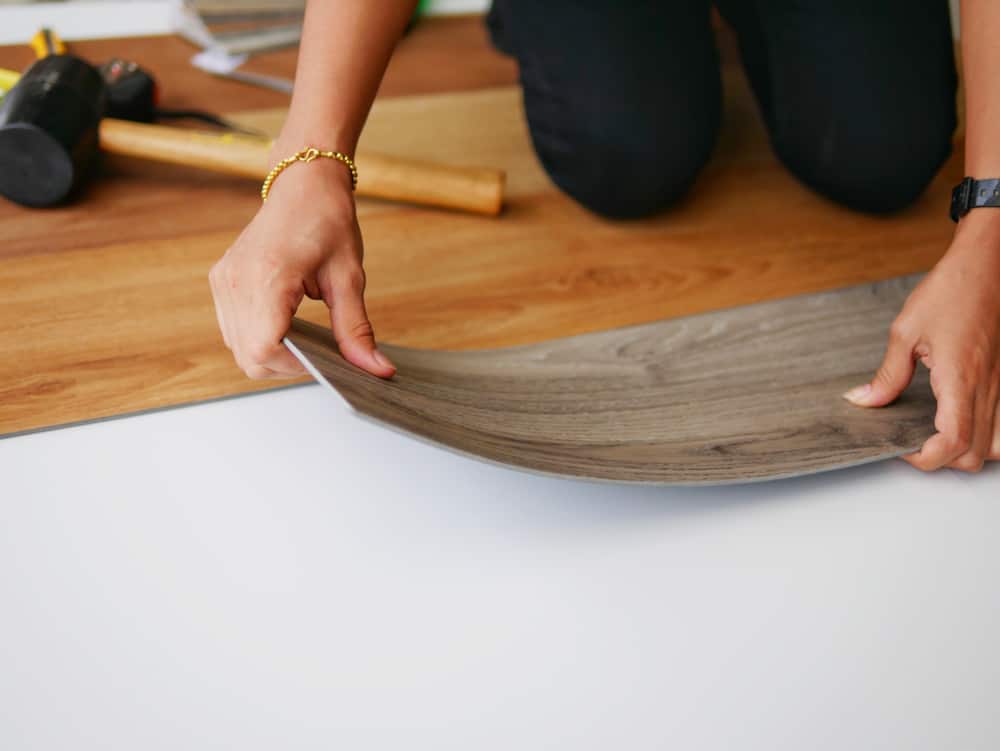LVT Flooring, or Luxury Vinyl Tile Flooring, is a type of flooring designed to look like stone or ceramic tile but made of vinyl. It is a popular choice for many homes and businesses because it is durable, easy to clean, and relatively easy to install. If you are a beginner, installing LVT flooring may seem daunting. However, with a bit of patience and the right tools, it is a relatively easy task that can be accomplished in a few hours.
This article will provide a few DIY tips on installing LVT flooring as a beginner. Following these tips, you can install your new flooring confidently and easily!
Gather Your Tools

As a beginner, it is best to gather all the tools you will need to install LVT flooring before starting the job. This way, you will not have to pause in the middle of the project to find the necessary tools. The essential tools for this project include the following:
- Air compressor
- Air hose
- Aviation snips
- Belt sander
- Brad nail gun
- Chalk line
- Cold chisel
- Dust mask
- Hammer
- Hearing protection
- Knee pads
- Putty knife
- Safety glasses
- Sanding block
- Square
- Straightedge
- Tape measure
- Utility knife
To get started, you’ll need to gather the following tools:
Prepare Your Subfloor
Before you start your LVT installation project, it’s essential to prep your subfloor so that the process goes smoothly. Here are a few tips on how to do this:
- Start by cleaning the subfloor thoroughly to remove any dirt or debris that could interfere with the installation
- Then, check the subfloor for any damage or irregularities and make sure to repair any issues before proceeding
- Finally, make sure the subfloor is completely dry before you start the installation process
By taking the time to prep your subfloor, you’ll ensure that your LVT installation goes smoothly and that your new flooring looks great for years to come.
Undercut Door Jambs

If you’re a beginner installer, one of the best tips we can give you is to undercut door jambs. By doing this, you’ll be able to install LVT flooring much more quickly. It may seem like a small tip, but it can make a big difference in your installation quality.
Undercutting door jambs is reasonably straightforward. You can use a hand saw or an electric saw to do it. Just be careful not to damage the door itself. Once you’ve undercut the door jambs, you’ll be able to install LVT flooring much more quickly. It’s a small tip, but it can make a big difference in your installation quality.
Plan Your Layout
If you’re considering installing LVT flooring in your home, you’ll need to plan your layout carefully. This is especially true if you’re a beginner, as it’s easy to make mistakes when starting.
Here are a few tips to help you plan your layout and avoid common mistakes:
- Measure the space carefully and make sure you have enough LVT flooring to cover the entire area.
- Draw a diagram of the space so you can visualize the finished product.
- Make sure you allow for expansion and contraction when planning your layout.
- As a general rule, always start your installation from the left side of the room and work your way toward the right. This will ensure a more efficient installation. Also, ensure that you have at least a quarter-inch gap between the LVT plank and the wall to allow for expansion and contraction.
- Lastly, if you’re installing LVT in a large room, it’s a good idea to install it in sections to make the process easier.
Following these tips will help you install LVT flooring like a pro.
Inspect Your Tiles

Before installing LVT flooring, you need to ensure that your subfloor is in good condition. This means you need to inspect your tiles to see if they are level and free of defects. If you find any cracked or broken tiles, you will need to replace them before you can continue.
It is also a good idea to take a photo of your tiles before you begin the installation process so that you can reference it later if needed. If you find any damaged or missing tiles, replace them with new ones before you begin the installation. Once your tiles are in good shape, you can install your LVT flooring.
Once you have inspected your tiles, you can install your LVT flooring. This process is relatively simple and can be done by following the instructions that come with your flooring. If you need help with how to proceed, you can always consult a professional for help.
Install Your Tiles
As a beginner, you should install your tiles to install LVT flooring. This process requires effort, but the results are worth it when you have a beautiful, level floor. Here are some tips to help you get started:
- Start by preparing the subfloor. This means cleaning it and making sure it is level.
- Once the subfloor is prepared, you can begin installing the LVT flooring. Start by laying the first tile in the corner of the room and working your way out.
- To install the remaining tiles, insert them into the tongue and groove system on the previous plank.
- Once all tiles are in place, use a roller to press them into the adhesive.
- Allow the floor to cure for at least 24 hours before walking on it.
After Care

Installing LVT flooring is not difficult, but it is essential to take the necessary precautions to ensure that the job is done correctly. After the installation is complete, it is essential to follow the proper aftercare instructions to maintain the floors’ beauty and ensure their longevity.
Some of the critical aftercare tips after installing LVT flooring include:
- Vacuum the floors regularly to remove dirt and debris
- Mop the floors with a damp cloth or mop
- Avoid using harsh chemicals or cleaners on the floors
- Do not place heavy furniture or appliances on the floors
Following these simple aftercare tips, you can enjoy your beautiful new floors for many years.
Bottomline
As a beginner, you should opt for LVT flooring. It is easy to install and does not require any professional skills. You can find various LVT flooring products online or in your local store. Be sure to read the installation instructions carefully before you begin. With a little effort, you can easily install LVT flooring yourself.






